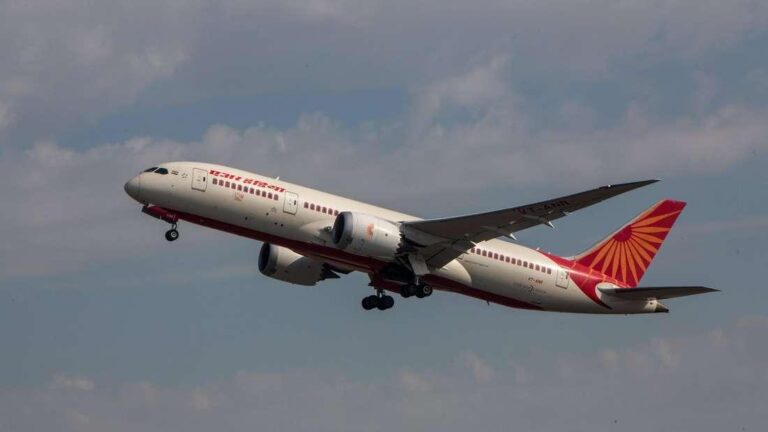The black box data from the recent Air India fatal crash has been successfully recovered, shedding crucial light on the circumstances surrounding the tragic incident. Authorities and investigators are now meticulously analyzing the flight recorders to piece together the sequence of events leading up to the disaster. This significant development marks a critical step forward in understanding the factors that contributed to the crash, with implications for aviation safety and accountability. Further updates are expected as experts delve deeper into the data retrieved from the aircraft’s cockpit voice and flight data recorders.
Air India Black Box Data Recovered Shedding Light on Crash Causes
The recovered flight data recorder and cockpit voice recorder from the Air India crash have provided critical insights into the events leading up to the tragedy. Preliminary analysis indicates that a combination of technical malfunctions and unfavorable weather conditions likely contributed to the crash. Investigators have uncovered erratic altitude readings and abrupt changes in engine performance captured in the black box, pointing to a possible mechanical failure. Additionally, cockpit communications reveal the crew’s struggle to manage unexpected system alerts amid deteriorating visibility, intensifying the challenge of safely navigating the flight.
Experts have highlighted several key factors extracted from the black box data that are being closely examined:
- Engine anomalies: Fluctuations in thrust levels detected moments before the crash.
- Control responses: Pilot inputs and system reactions showing signs of stress under adverse conditions.
- Communication timeline: Detailed timestamps of crew conversations and automated warnings providing a clearer sequence of events.
| Aspect | Details |
|---|---|
| Altitude Variability | Rapid descent noted within last 2 minutes |
| Engine Status | Intermittent fluctuations in engine 2 power output |
| Weather Conditions | Heavy rain with reduced visibility at crash site |
| Communication | Multiple automated alerts between pilots |
Preliminary Analysis Points to Key Technical and Human Factors
Initial findings from the black box data have revealed a complex interplay of technical glitches and human judgment errors leading up to the tragic Air India crash. Flight data recorder (FDR) and cockpit voice recorder (CVR) transcripts indicate anomalies in the aircraft’s navigation systems, with erratic altitude readings and inconsistent autopilot responses. These technical disruptions appear to have injected a sense of urgency and confusion within the cockpit, challenging the pilots’ ability to maintain operational control during critical moments.
Moreover, communication lapses between the crew and air traffic control (ATC) compounded the situation. The data highlights delayed acknowledgment of warnings and fragmented coordination, impairing timely decision-making. This preliminary analysis underscores the significance of enhanced training protocols focusing on emergency scenario management and the integration of robust fail-safes in cockpit instrumentation. Key points extracted from the black box data include:
- Unstable autopilot engagement during descent.
- Irregular cockpit alerts related to engine performance.
- Delayed crew responses to weather-related advisories.
- Communication gaps in coordinating emergency procedures.
| Factor | Impact | Response Time |
|---|---|---|
| Navigation System Fault | Reduced situational awareness | 1.2 minutes delay |
| Pilot Reaction | Suboptimal emergency protocol | 45 seconds delay |
| ATC Communication | Missed weather warnings | 30 seconds delay |
Experts Recommend Enhanced Safety Protocols and Rigorous Pilot Training
In light of the recent findings from the Air India black box data, aviation experts emphasize that strengthening safety measures is paramount to prevent future tragedies. The data revealed critical lapses that could have been mitigated with more stringent operational protocols. Industry leaders urge airlines to adopt a multi-layered approach to safety that encompasses both technological upgrades and human factors. This includes regular system audits, predictive maintenance, and enhanced cockpit resource management to improve decision-making during emergencies.
Moreover, the analysis underlines the urgency of rigorous pilot training programs tailored to equip flight crews with the skills necessary to handle complex scenarios. Recommended initiatives include:
- Advanced simulators replicating extreme weather and system failures
- Mandatory recurrent training every six months focused on emergency response
- Psychological assessment and resilience-building workshops
- Enhanced communication protocols between cockpit and ground control
| Safety Enhancement | Impact | Implementation Timeline |
|---|---|---|
| Predictive Maintenance Systems | Reduce mechanical failures by 30% | 12 months |
| Advanced Simulation Training | Improve pilot emergency response | 6 months |
| Pilot Psychological Assessment | Enhance mental resilience | Immediately |
In Retrospect
As investigators continue to analyze the recovered black box data from the tragic Air India crash, authorities hope the insights will provide a clearer understanding of the events leading up to the disaster. This crucial information is expected to play a key role in shaping future aviation safety measures and preventing similar incidents. Updates will be provided as the investigation progresses.




